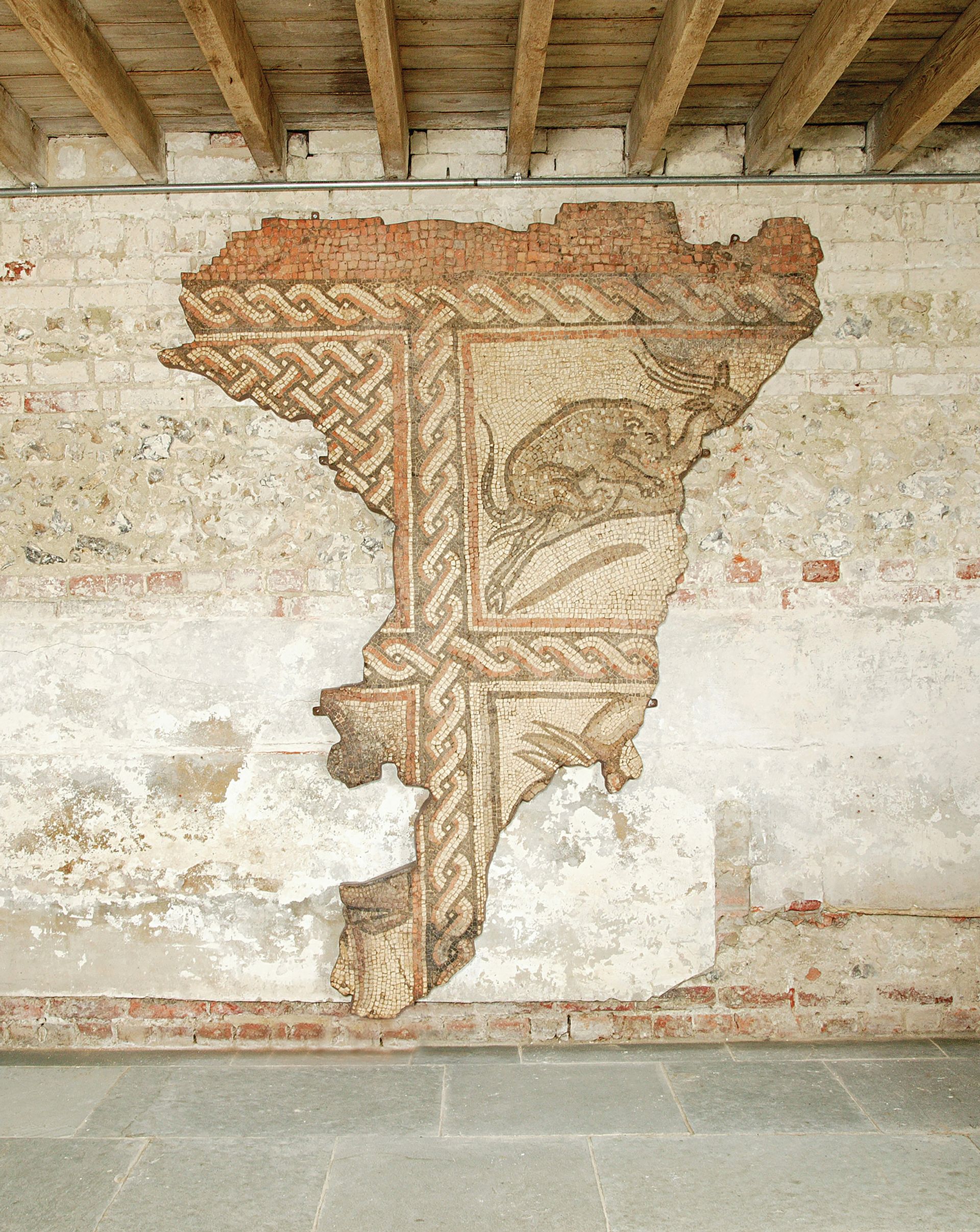
This mosaic from a Roman villa in Dewlish, Dorset, is leaving the English county for the first time this month since it was made around 1,700 years ago, to be exhibited at Masterpiece London. According to Hutchins’s The History and Antiquities of the County of Dorset (1774), the villa was first discovered in 1740 when a storm uprooted a tree revealing a mosaic, though it was only between 1969 and 1979 that it was properly excavated under the direction of W.G. Putnam. Edward Hurst bought the fragment, now professionally mounted, last autumn, and says: “The owner had been given it on completion of the excavations at Dewlish, effectively as a thank-you for allowing the dig to take place. Thus, an extraordinary provenance—wonderful to know not only the villa it came from, but even the very room.” He describes it as “similar in style and period to the Hinton St Mary mosaic in the British Museum”, one of the items chosen by Neil MacGregor for his BBC Radio 4 series, A History of the World in 100 Objects. Romano-British mosaic, attributed to the Durnovarian School (early 4th century AD), Edward Hurst at Masterpiece London, 27 June-3 July. £150,000.
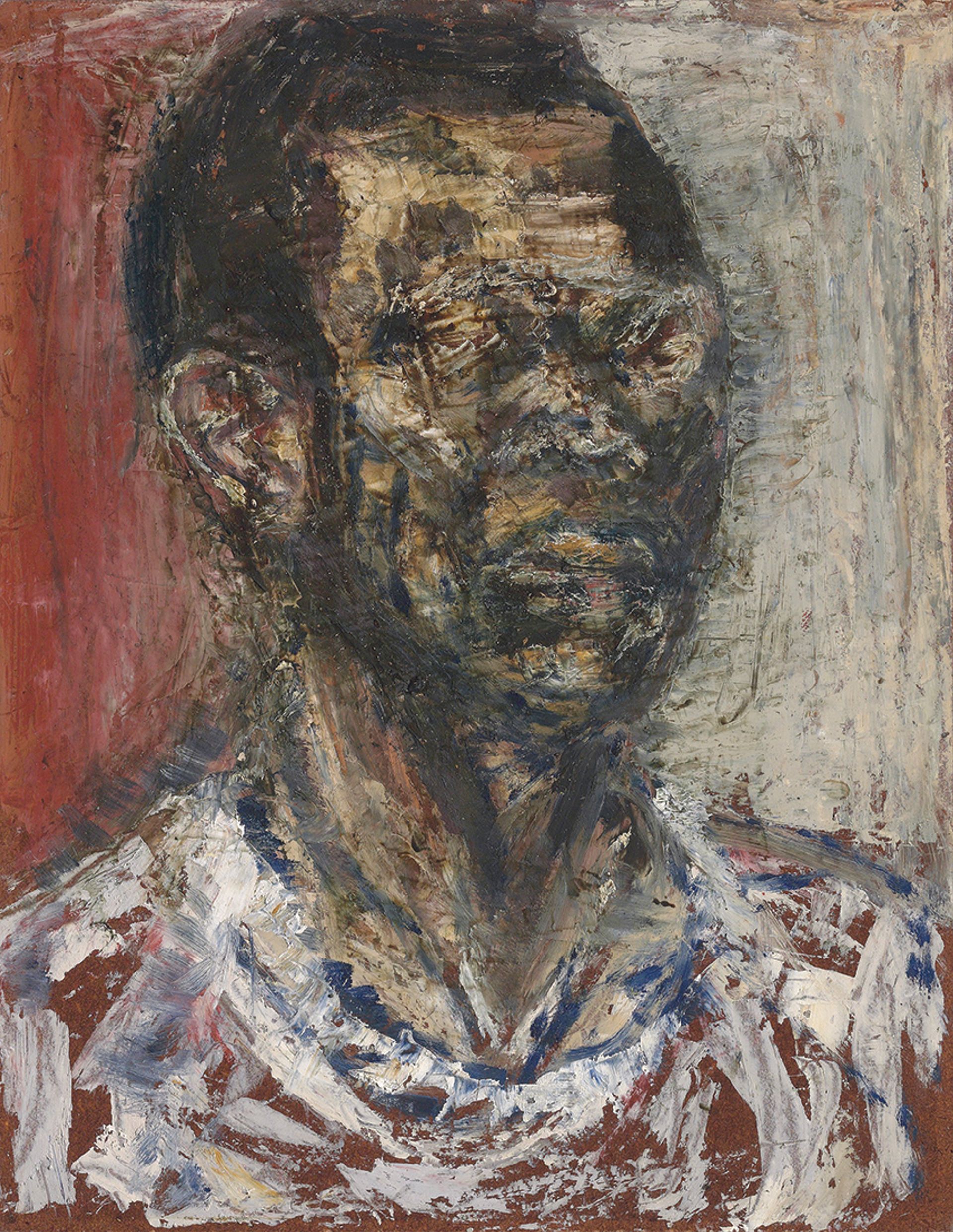
Frank Bowling rarely painted self-portraits—hence they very seldom come to auction—so this work, painted early in Bowling’s life, might be somewhat difficult to estimate. A contemporary of Hockney at the Royal College of Art, Bowling has recently enjoyed a period of explosive production in the last decade of his 60-year career. Born in Guyana, he moved to London when he was 19 years old; now 85, he still paints every day. Bowling is known for his thickly textured experimental canvases and “poured paintings” made by pouring paint down an inclined surface. The sale of this work is preceded by the opening of Frank Bowling at Tate Britain (until 26 August), the first major retrospective dedicated to the painter. Frank Bowling, Self-Portrait (1959), Modern British Art Day Sale, Christie’s, London, 18 June. Estimate £30,000-£50,000.
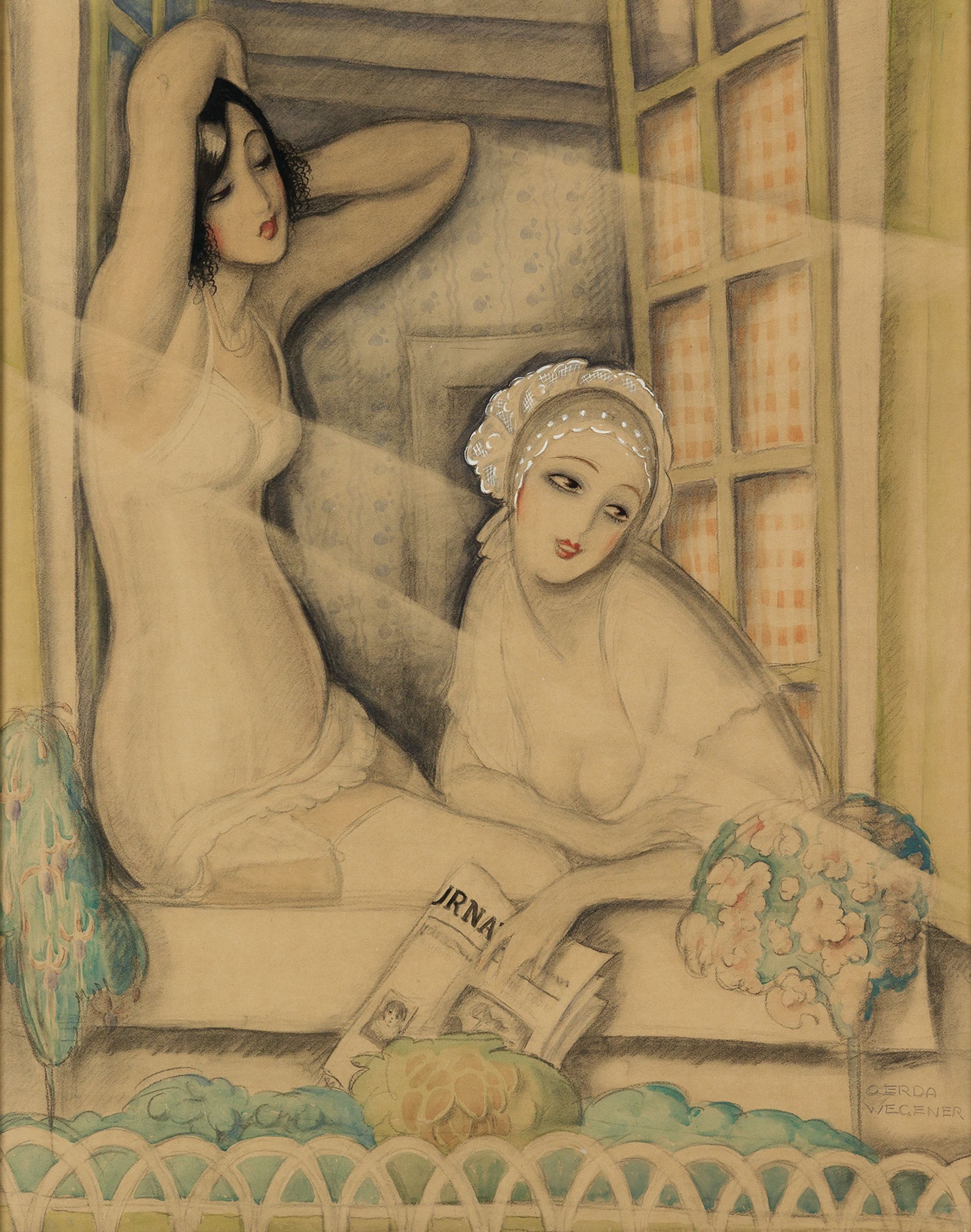
Part of Swann’s inaugural Pride Sale celebrating the cultural contributions of LGBTQ+ creatives from the last 200 years, this work on paper by the Danish Art Deco illustrator Gerda Wegener is a prime example of her Cubist-influenced style and features one of her most popular motifs: two women together. Wegener was known for her progressive feminist portraits and her spouse, Lili Elbe, was also an artist in addition to being one of the first women to undergo gender reassignment surgery in 1930; the woman on the left of this work is modelled after her. Wegener and Elbe became icons of the LGBTQ+ movement and the novel-turned-film The Danish Girl is based on their artistic and romantic relationship. Gerda Wegener, Two Women in a Window (around 1920), The Pride Sale, Swann Galleries, New York, 20 June. Estimate $15,000-$25,000.
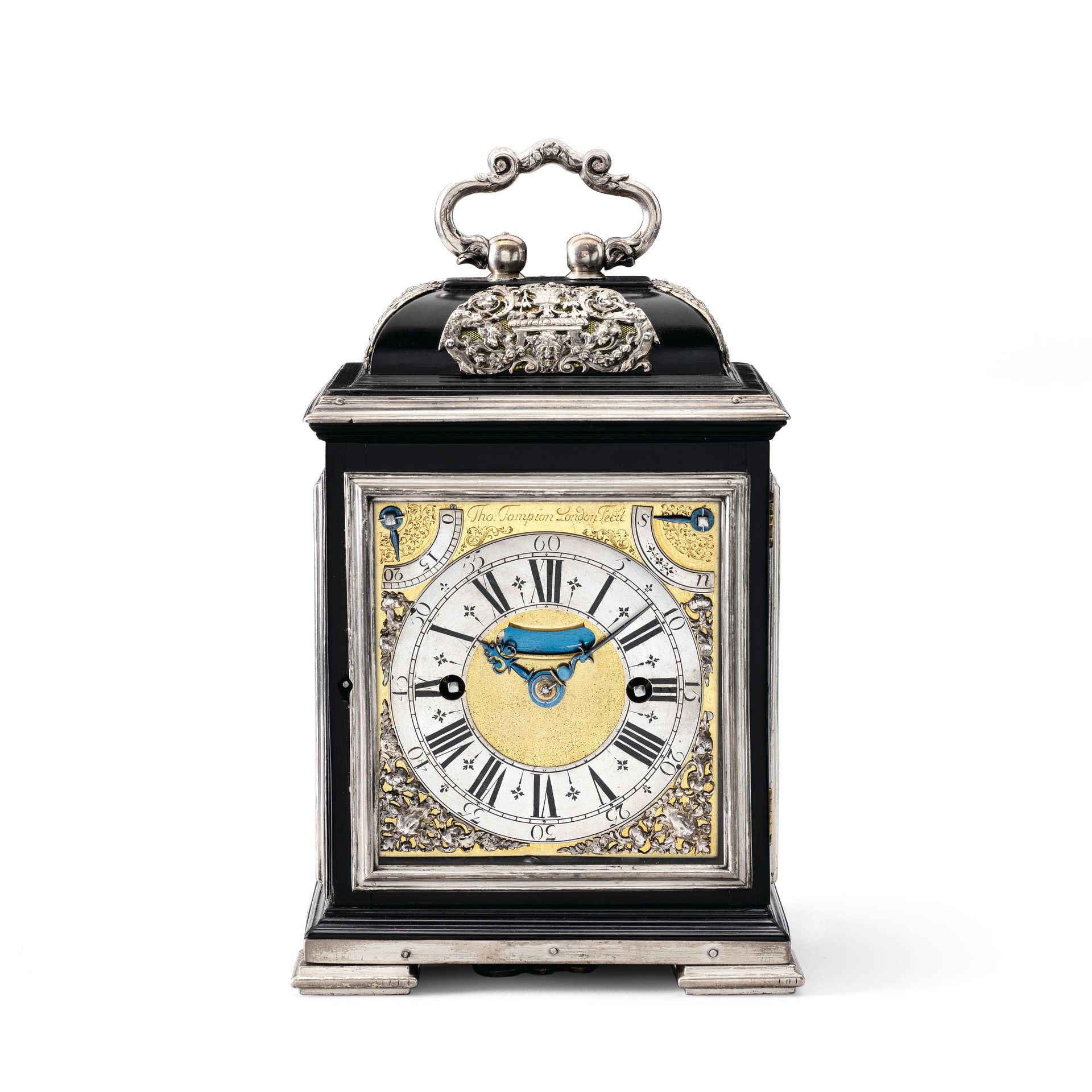
For ardent horologists, Thomas Tompion (1639-1713) is a god among English clockmakers, so it is unsurprising that this silver-mounted ebony miniature striking bracket clock has a hefty seven-figure estimate, particularly given its royal provenance—Tompion made No 222 in his inventory for Queen Mary. James Stratton, the head of Bonhams clocks department, says that the clock is unique due to its diminutive size and royal coat of arms on the silver mounts: “There is no other clock like it. Its appearance at auction for the first time in many decades will excite great interest, not only in the horological community but far beyond.” Thomas Tompion, No 222, The King William & Queen Mary Royal Tompion (around 1693), The Clive Collection of Exceptional Clocks & watches, Bonhams, London, 19 June. Estimate £2m-£3m.
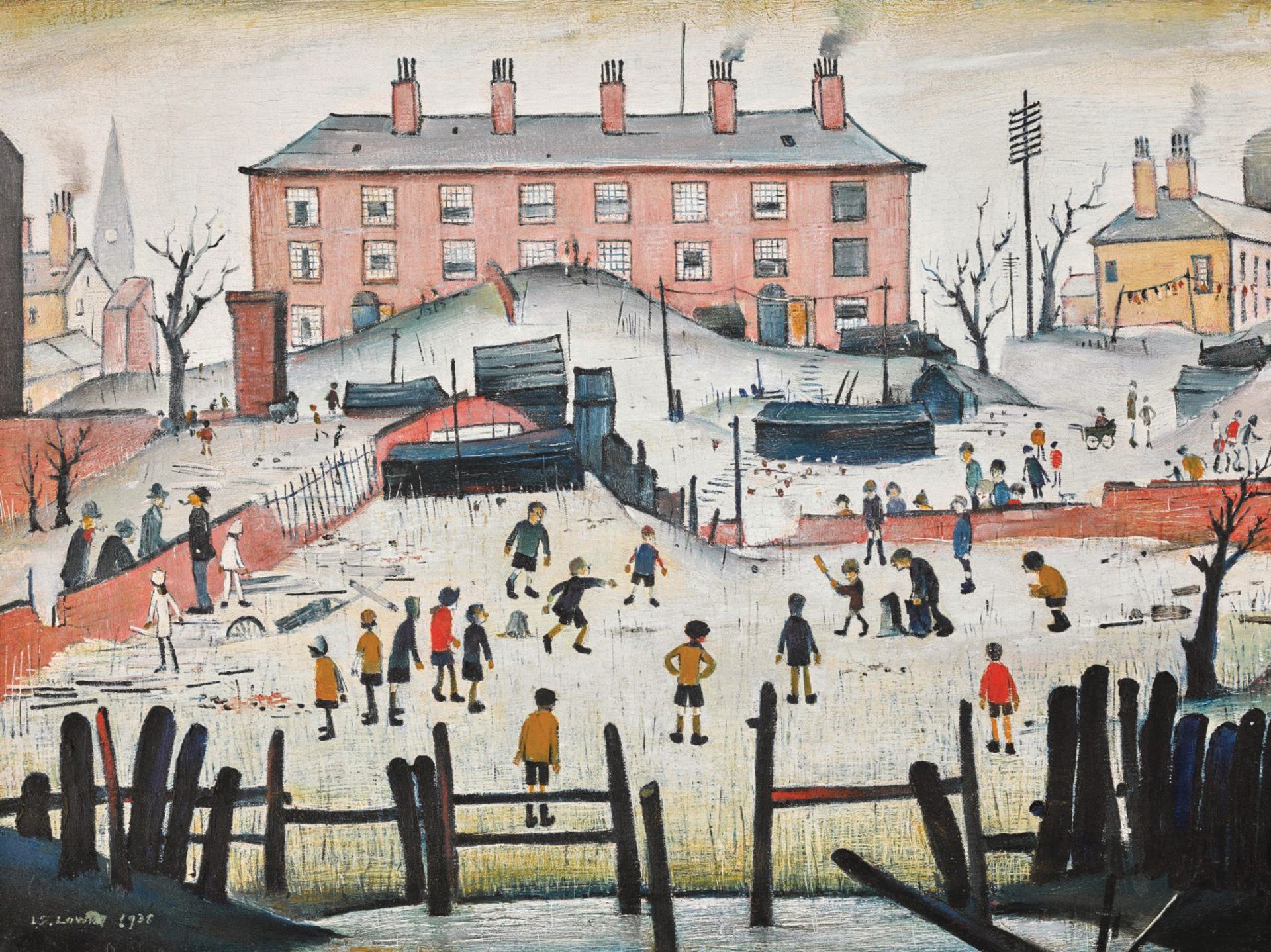
This scene contains everything a Lowry collector looks for: a match, and plenty of matchstick men. When it last appeared at auction in 1996, A Cricket Match made a record £282,000, a sum since surpassed—The Football Match (1949) sold for £3.4m with fees in 2011 at Christie’s, setting the current record for the Salford artist. Here, in typical style, Lowry chooses not some manicured pitch populated by public schoolboys in pristine whites, but instead a bit of scrappy urban wasteland, commandeered by children with makeshift wickets. The painting is being sold by the US-based collectors Neil and Gina Smith. Neil Smith was born and raised in Greater Manchester, typical of many Lowry collectors who are drawn to his depictions of the industrial northern England of their youth. L.S. Lowry, A Cricket Match (1938) Modern & Post-War British Art Evening Sale, Sotheby’s, London, 18 June. Estimate £800,000-£1.2m.
This mosaic from a Roman villa in Dewlish, Dorset, is leaving the English county for the first time this month since it was made around 1,700 years ago, to be exhibited at Masterpiece London. According to Hutchins’s The History and Antiquities of the County of Dorset (1774), the villa was first discovered in 1740 when a storm uprooted a tree revealing a mosaic, though it was only between 1969 and 1979 that it was properly excavated under the direction of W.G. Putnam. Edward Hurst bought the fragment, now professionally mounted, last autumn, and says: “The owner had been given it on completion of the excavations at Dewlish, effectively as a thank-you for allowing the dig to take place. Thus, an extraordinary provenance—wonderful to know not only the villa it came from, but even the very room.” He describes it as “similar in style and period to the Hinton St Mary mosaic in the British Museum”, one of the items chosen by Neil MacGregor for his BBC Radio 4 series, A History of the World in 100 Objects. Romano-British mosaic, attributed to the Durnovarian School (early 4th century AD), Edward Hurst at Masterpiece London, 27 June-3 July. £150,000.
Object lessons: from an ancient Roman mosaic to an Art Deco icon of the LGBTQ+ movement
Our pick of items from auctions and fairs around the world over the next fortnight
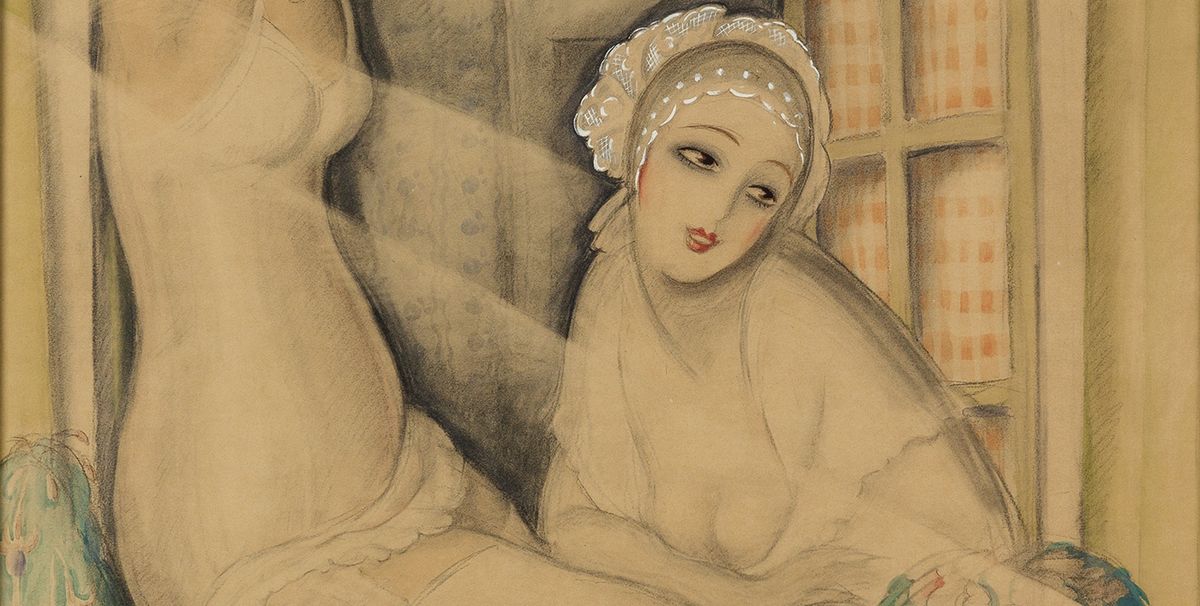
Gerda Wegener, Two Women in a Window (around 1920) Swann Auction Galleries

